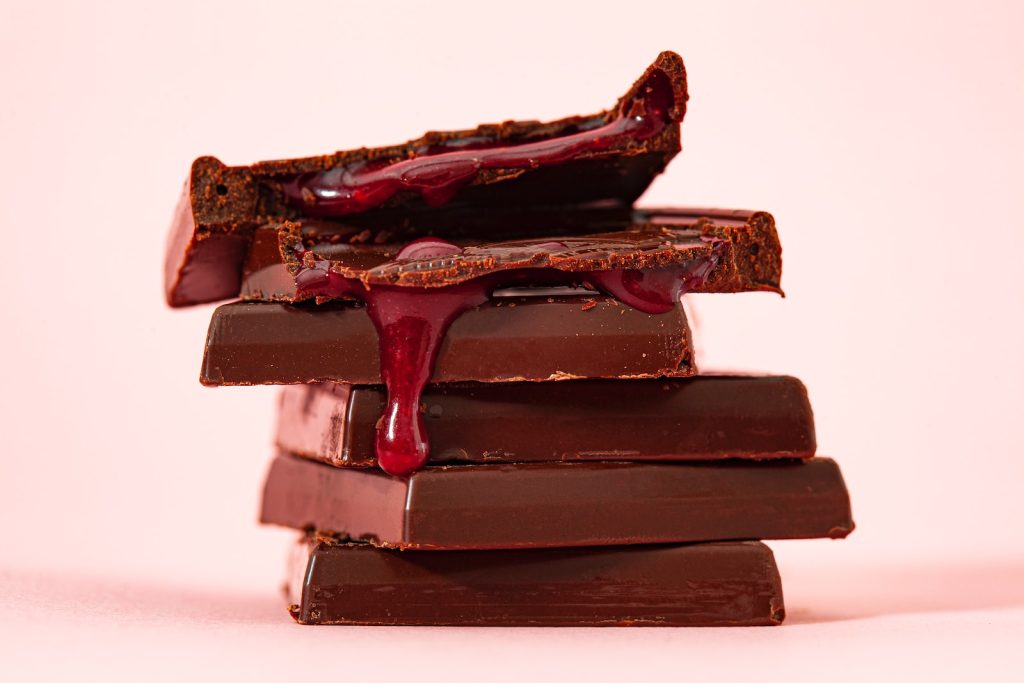- Exploring the Versatility of Chocolate in Gluten-Free Cuisine
- Discussing the Potential of Chocolate in Gluten-Free Recipes
- Highlighting the Benefits of Using Chocolate in Gluten-Free Cooking
Chocolate is a beloved ingredient that has been used in various culinary creations for centuries. Its rich and indulgent flavor profile makes it a popular choice for desserts and confections. But what about its role in gluten-free cuisine? Can chocolate be a delicious and safe option for those following a gluten-free diet? In this article, we will delve into the use of chocolate in gluten-free cooking, exploring its versatility, potential, and the benefits it brings to gluten-free recipes.
Is Chocolate Gluten-Free?
- Pure chocolate made from roasted cacao beans is naturally gluten-free.
- Commercial chocolate products may contain added ingredients that could contain gluten or be cross-contaminated with gluten.
- Individuals with celiac disease or gluten sensitivity should look for gluten-free certification before consuming chocolate products.
The first and foremost question when considering the use of chocolate in gluten-free cuisine is whether chocolate itself is gluten-free. The answer is yes, pure chocolate made from roasted cacao beans is naturally gluten-free. However, it’s essential to be aware that many commercial chocolate products may contain added ingredients that could potentially contain gluten or be cross-contaminated with gluten during the manufacturing process. This is particularly important for individuals with celiac disease or gluten sensitivity, as even trace amounts of gluten can trigger adverse reactions. To ensure the safety of consuming chocolate, it is recommended that those with gluten-related conditions look for gluten-free certification on chocolate products.
Common Gluten-Free Chocolate Brands
- Schär offers a line of certified gluten-free chocolate snacks, including Twin Bar, Hazelnut Truffle, and Chocolate Hazelnut Bars. Other gluten-free chocolate brands include Evolved Chocolate and Hu Kitchen.
For those seeking gluten-free chocolate options, several brands cater to this dietary requirement. Schär, a well-known gluten-free brand, offers a line of certified gluten-free chocolate snacks, including Twin Bar, Hazelnut Truffle, and Chocolate Hazelnut Bars. These products provide a safe and delicious option for individuals with gluten-related conditions. Additionally, other brands such as Evolved Chocolate and Hu Kitchen also offer gluten-free chocolate options, allowing individuals to indulge in their favorite treat without compromising their dietary needs.
Using Chocolate as a Substitute for Gluten in Baking



- Chocolate can be used as a substitute for gluten in baking due to its binding properties and ability to provide structure in gluten-free baked goods.
- Baking chocolate and cocoa powder are staple ingredients to have on hand for gluten-free baking.
One of the challenges faced by individuals following a gluten-free diet is finding suitable substitutes for gluten-containing ingredients in baking. Chocolate can be a valuable ally in this regard. With its binding properties and ability to provide structure, chocolate can serve as a suitable replacement for gluten in various baked goods. Baking chocolate and cocoa powder, both derived from cacao beans, are staple ingredients to have on hand for gluten-free baking endeavors. They not only contribute to the flavor and texture of gluten-free treats but also help ensure a successful outcome in terms of both taste and appearance.
Tips for Using Chocolate in Gluten-Free Recipes
- Check the label and ingredient list to ensure the chocolate used is gluten-free.
- Be mindful of potential cross-contamination risks in chocolate factories.
- Explore different types of chocolate (dark, milk, white) and their ingredients.
- Use gluten-free chocolate chips or chunks in cookies or cakes.
When incorporating chocolate into gluten-free recipes, it is crucial to take certain precautions to ensure the safety and quality of the final dish. Checking the label and ingredient list of chocolate products is essential to verify their gluten-free status. This practice helps to avoid any hidden sources of gluten that may be present. Moreover, it is essential to be aware of potential cross-contamination risks that may occur in chocolate factories where gluten-containing ingredients are handled. Exploring different types of chocolate, such as dark, milk, and white chocolate, can also add variety and depth of flavor to gluten-free creations. Lastly, using gluten-free chocolate chips or chunks in cookies or cakes can be an excellent way to incorporate chocolate while ensuring the absence of gluten.
Delicious Gluten-Free Chocolate Dessert Ideas
- Dark chocolate truffles.
- Gooey chocolate brownies.
- Peanut butter chocolate snack bars.
- Flourless chocolate cake.
- Chocolate avocado mousse.
- Chocolate-covered strawberries.
Now that we have explored the use of chocolate in gluten-free cuisine, let’s dive into some delectable gluten-free chocolate dessert ideas. These treats will not only satisfy your sweet tooth but also showcase the versatility of chocolate in gluten-free recipes. Indulge in the rich and decadent flavors of dark chocolate truffles, gooey chocolate brownies, and peanut butter chocolate snack bars. For a flourless option, try a luscious flourless chocolate cake or a creamy chocolate avocado mousse. And for a delightful and elegant treat, indulge in chocolate-covered strawberries. These dessert ideas demonstrate that gluten-free cuisine can be just as indulgent and delicious as its gluten-containing counterparts.
Potential Risks for Individuals with Celiac Disease or Gluten Sensitivity
- Read chocolate labels and check for gluten-containing ingredients.
- Cross-contamination can occur in chocolate processing facilities that handle gluten-containing ingredients.
- Certified gluten-free products are the best option for those with celiac disease or gluten sensitivity.
While chocolate itself can be gluten-free, it is crucial for individuals with celiac disease or gluten sensitivity to be cautious and aware of potential risks. Reading chocolate labels and checking for gluten-containing ingredients is essential to avoid any potential sources of gluten. Additionally, cross-contamination can occur in chocolate processing facilities that handle gluten-containing ingredients, posing a risk for individuals with gluten-related conditions. To minimize these risks, seeking out certified gluten-free products is highly recommended, as they undergo rigorous testing to ensure their safety for those with celiac disease or gluten sensitivity.
Nutritional Benefits of Gluten-Free Chocolate
- Dark chocolate has a high antioxidant content.
- Chocolate has mood-enhancing properties.
- Chocolate may have potential cardiovascular benefits.
Aside from its delectable taste, chocolate also offers several nutritional benefits. Dark chocolate, in particular, is known for its high antioxidant content, which can help combat oxidative stress and inflammation in the body. Additionally, chocolate has been found to have mood-enhancing properties, thanks to its ability to stimulate the release of endorphins and serotonin, the “feel-good” hormones. Moreover, studies have suggested that chocolate, especially dark chocolate, may have potential cardiovascular benefits, such as improving blood flow and reducing the risk of heart disease. So, when enjoying gluten-free chocolate treats, you can also indulge in the knowledge that they may offer some health advantages.
Gluten-Free Chocolate Substitutes and Alternatives
- Cacao nibs or raw cacao powder can be used as gluten-free chocolate alternatives.
- Carob powder is a non-chocolate alternative for those avoiding gluten.
- Homemade gluten-free chocolate recipes can be made using alternative sweeteners and ingredients.
For individuals who prefer to avoid chocolate altogether or are looking for alternatives, there are options available in the realm of gluten-free cuisine. Cacao nibs or raw cacao powder can be used as substitutes for chocolate in various recipes, providing a similar flavor profile while remaining gluten-free. Carob powder, derived from the carob tree, is another non-chocolate alternative that can be used in baking and cooking for those avoiding gluten. Lastly, individuals can experiment with homemade gluten-free chocolate recipes using alternative sweeteners and ingredients that suit their dietary needs. These substitutes and alternatives ensure that even those with specific dietary restrictions can still enjoy the delightful flavors and creations of gluten-free cuisine.
Gluten-Free Chocolate Resources and Recipe Ideas
Websites and blogs specializing in gluten-free chocolate recipes can provide additional resources and recipe ideas.
Cookbooks dedicated to gluten-free and chocolate-based cuisine are available.
Online communities and forums offer a platform for sharing gluten-free chocolate recipe ideas and tips.
For those looking to explore the world of gluten-free chocolate cuisine further, there are abundant resources available. Websites and blogs specializing in gluten-free recipes often feature a wide array of chocolate-based creations, providing inspiration and detailed instructions. Cookbooks dedicated to gluten-free and chocolate-centric cuisine can also be valuable sources of recipes and guidance. Additionally, online communities and forums offer a platform for individuals to share their own gluten-free chocolate recipe ideas, tips, and tricks, fostering a sense of community and support. These resources enable individuals to expand their culinary horizons and discover new and exciting ways to incorporate chocolate into their gluten-free cooking adventures.
Conclusion
Embracing the versatility of chocolate in gluten-free cooking opens up a world of possibilities for individuals with gluten-related conditions. From delectable desserts to savory dishes with a touch of chocolate, the use of chocolate in gluten-free cuisine allows for creativity and indulgence. By ensuring the chocolate used is gluten-free, being mindful of potential cross-contamination risks, and exploring alternative options, individuals can enjoy the rich and satisfying flavors of chocolate while adhering to their dietary needs. So, whether it’s a batch of gooey gluten-free brownies or a velvety chocolate avocado mousse, let chocolate be your ally in creating delicious gluten-free dishes that will delight your taste buds.

